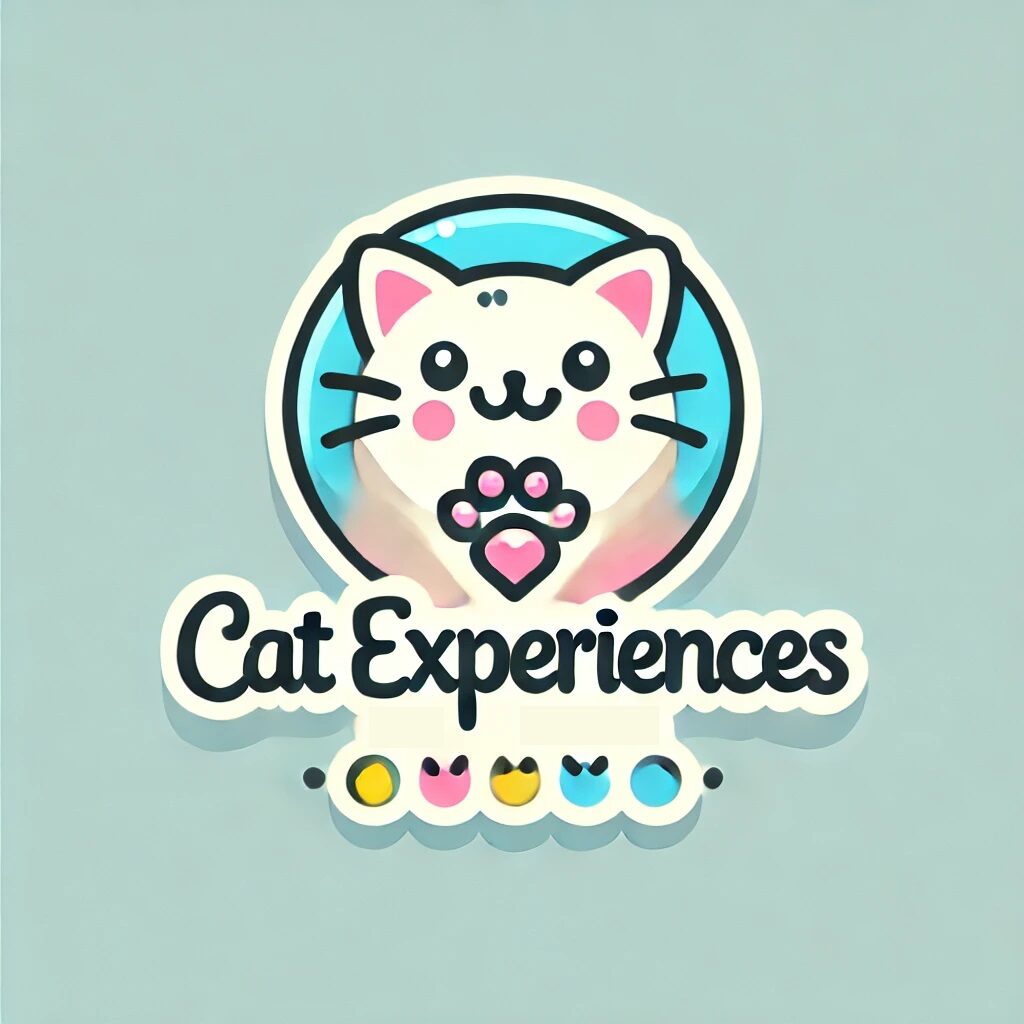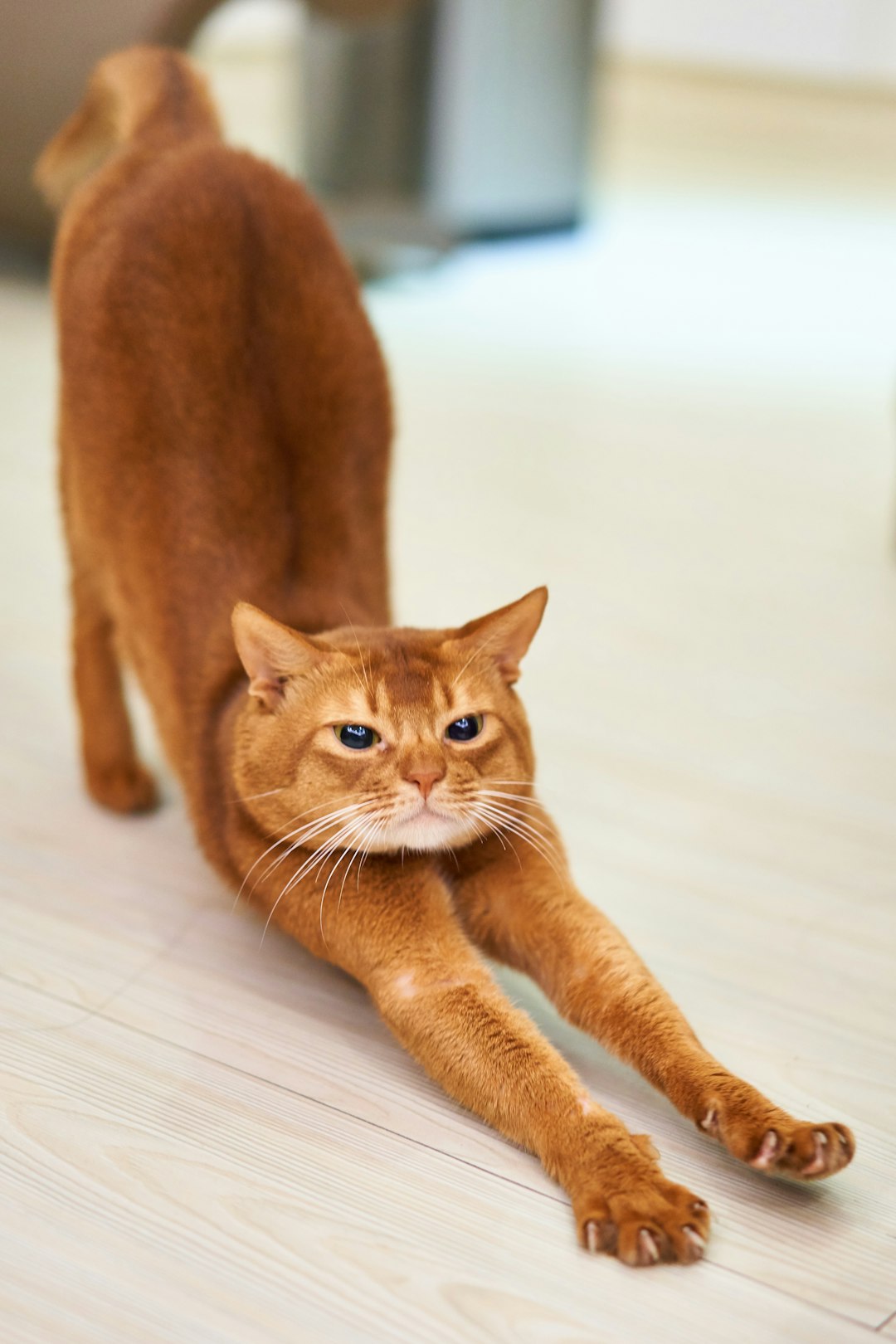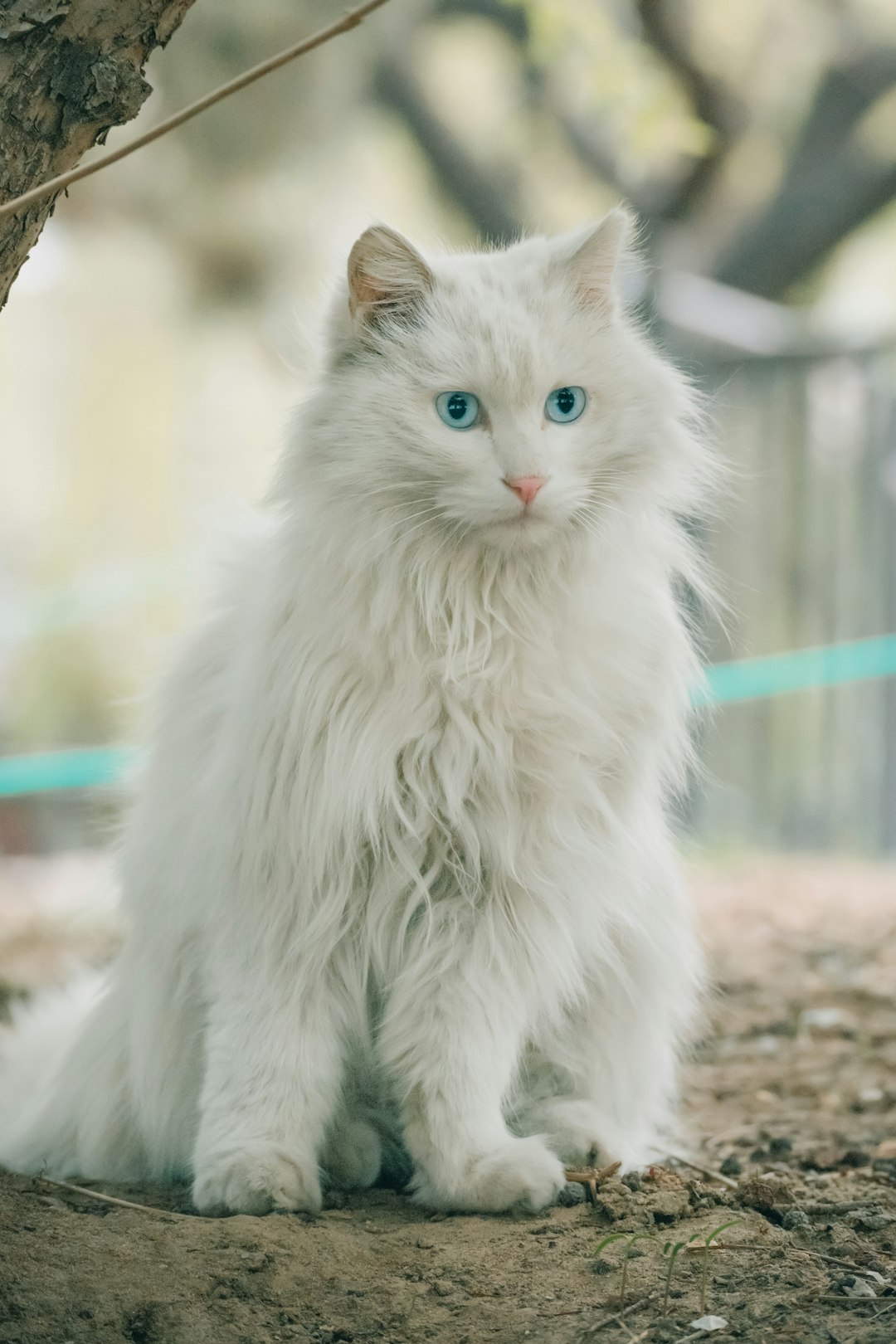Choosing the right cat litter can be a pivotal decision for any cat owner, influencing both the comfort of your feline friend and the cleanliness of your home. As every cat has unique preferences and needs, it’s essential to understand what works best for them. From clumping to non-clumping options, and scented versus unscented varieties, the choices can be overwhelming. In this guide, we will navigate the different types of litter available, discuss essential factors to consider—especially for households with multiple cats or those with specific health issues—and provide practical tips for litter box maintenance. Whether you’re a first-time cat parent or looking to make a switch, this comprehensive overview will ensure you find the perfect match for your beloved pet.
Understand Your Cat’s Needs
Selecting the most appropriate type of litter for your feline companion begins with thoroughly understanding their unique needs. Different factors, such as age, health, and behavior, can significantly impact the suitability of various litter options.
Age and Health Considerations
Cats at various life stages may have distinct requirements. For instance, kittens need lightweight, non-toxic litter as they are still exploring and may ingest items while playing. Conversely, senior cats might require softer, less abrasive materials to protect sensitive paws. Moreover, any existing health issues, such as urinary tract infections, may necessitate specialized litters that maintain dryness and control odors effectively.
| Stage | Litter Type Recommendations |
|---|---|
| Kittens | Lightweight, non-toxic options |
| Adults | Clumping and dust-free varieties |
| Seniors | Soft, non-irritating materials |
Behavioral Traits
Understanding your cat’s personality can also guide your litter choice. Some cats prefer certain textures, while others may be more sensitive to scents. Introverted cats might appreciate unscented, soft litter, providing a quiet, comfortable environment for their business. In contrast, more social felines may adapt well to various types, including scented options, provided they have ample space to explore in a multi-cat household.
Litter Box Habits
Pay attention to your cat’s litter box habits. If a cat frequently avoids the litter box, it could signal discomfort with the current litter. Regularly observe whether they dig, scratch, or hesitate while using it. Finding a type that offers both comfort and functionality can make a significant difference in their overall well-being.
| Behavior | Possible Solution |
|---|---|
| Avoiding the box | Try alternative textures |
| Excessive digging | A softer, less clumping option |
| Hesitation to enter | Experiment with location/scents |
Evaluating these aspects will ensure that you choose a litter that caters to your cat’s individual needs, enhancing their litter box experience and overall contentment.
Types of Cat Litter
Selecting the right type of litter ensures both comfort and cleanliness for your feline companion. Below are several primary categories of litter, each with its unique properties and benefits.
Clay Litter
Clay litter is a popular choice among cat owners due to its absorbent nature. It comes in two main types:
| Type | Pros | Cons |
|---|---|---|
| Clumping | Forms solid clumps for easy scooping | Can be dusty, causing respiratory issues |
| Non-Clumping | Generally inexpensive and low dust | Needs more frequent changing |
Its ability to control odors and moisture makes it a favored option.
Biodegradable Litter
Biodegradable litter is another excellent option, particularly for environmentally-conscious pet owners. This type is made from natural materials like wood, corn, and paper. Here’s a quick look at its key features:
| Material | Pros | Cons |
|---|---|---|
| Wood | Naturally reduces odors and is compostable | May not clump well |
| Corn | Good absorbency and clumping capability | Potential for attracting pests |
| Paper | Low dust and gentle on paws | Less absorbent than clay options |
This litter is not only eco-friendly but also safe for both pets and the environment.
Crystal Litter
Crystal litter is made from tiny silica crystals. This innovative choice has distinct advantages, as shown in the table below:
| Feature | Benefits | Drawbacks |
|---|---|---|
| Absorbency | Exceptional moisture absorption | Can be pricier than other options |
| Odor control | Minimizes smells for an extended period | Some cats may dislike the texture |
Crystal litter’s long-lasting performance can significantly decrease the frequency of litter box changes, making it a convenient choice.
In summary, understanding the types of cat litter available can help you make an informed decision tailored to your cat’s preferences and your lifestyle.
Scented vs. Unscented Litter
Choosing between scented and unscented litter is an important decision that can affect your feline’s comfort and behavior. Let’s explore the pros and cons of each option.
Pros of Scented Litter
| Benefit | Details |
|---|---|
| Odor Control | Scented litter effectively masks unpleasant odors, creating a more pleasant environment. |
| Aromatic Appeal | Some scents, like lavender or citrus, can be enjoyable for owners, enhancing the overall experience. |
Cons of Scented Litter
| Drawback | Details |
|---|---|
| Potential Irritants | Artificial fragrances may cause sensitivity or allergies in cats, leading to avoidance of the litter box. |
| Overpowering Scents | Strong scents can be overwhelming for both cats and humans, defeating the purpose of a calm indoor space. |
When to Choose Unscented
Opting for unscented litter can be beneficial in specific scenarios:
- Sensitive Cats: If your feline exhibits any signs of allergies, unscented options are advisable to minimize irritation.
- Multi-cat Households: Unscented litter often reduces potential territorial disputes, as strong fragrances can overwhelm other cats.
- Health Considerations: Owners should consider unscented products if their cats have respiratory issues or are undergoing medical treatment.
Ultimately, the choice between scented and unscented litter hinges on your cat’s preferences and health needs. Observing your pet’s reactions can lead you to the most fitting option.
Clumping vs. Non-Clumping Litter
When selecting the appropriate litter for a feline companion, understanding the distinctions between clumping and non-clumping options is essential. Each type has unique properties, which cater to various preferences and requirements of both cats and their owners.
Benefits of Clumping Litter
Clumping litter forms solid masses upon contact with moisture, making it straightforward to scoop waste. Here are some key advantages:
| Advantage | Description |
|---|---|
| Easy Cleanup | Clumps make it simple to remove waste efficiently. |
| Odor Control | Effectively traps odors by consolidating waste. |
| Long-lasting | Typically requires less frequent complete changes. |
| Less Dust | Many clumping options produce minimal dust, benefiting respiratory health. |
Drawbacks of Non-Clumping Litter
While non-clumping litter may suit certain lifestyles, it presents challenges:
| Disadvantage | Explanation |
|---|---|
| Less Efficient Cleanup | Requires more frequent changes, making maintenance time-consuming. |
| Odor Management | Less effective at containing odors, which may be unpleasant in enclosed spaces. |
| Dust Production | Often generates more dust, which can be irritating for sensitive cats. |
| Increased Waste | Typically results in greater litter usage over time. |
Choosing the Right Consistency
Selecting the right litter consistency is crucial. Cats have individual preferences that could influence their litter box habits. Here are some factors to consider:
- Soft vs. Coarse Texture: Many cats prefer a finer texture that resembles sand.
- Grain Size: Larger grains may be less comfortable for some felines.
- Absorbency: Evaluating the absorbency of the litter can impact odor management and maintenance frequency.
Experimenting with both clumping and non-clumping varieties can aid in discovering the best fit for your furry friend, fostering a comfortable environment that meets both your needs and theirs.
Considerations for Multiple Cats
When sharing living spaces with more than one feline, there are critical considerations to ensure a clean and pleasant environment. Here are some essential aspects to keep in mind for a harmonious multi-cat household.
Choosing the Right Quantity
In a multiple cat setup, the general rule is to have one litter box per cat plus one extra. This approach helps minimize territorial disputes and ensures that each cat can comfortably use the box without feeling overcrowded. For example:
| Number of Cats | Recommended Number of Boxes |
|---|---|
| 1 | 2 |
| 2 | 3 |
| 3 | 4 |
| 4 | 5 |
Managing Odors
Odor control is paramount in a multi-cat home. To effectively manage smells, consider using clumping litter, which absorbs moisture and locks in odors. Also, regular scooping (at least once daily) is crucial. In addition, the use of an enclosed litter box can help contain odors better than an open option.
Litter Box Placement
Litter box placement can significantly influence usage. It’s recommended to put boxes in quiet, low-traffic areas. Cats value their privacy, so a peaceful and accessible spot can encourage regular usage. Moreover, avoid placing boxes near food and water bowls, as cats prefer separation during their hygiene routines.
By keeping these considerations in mind, pet owners can create a comfortable and clean environment that meets the needs of multiple felines, ensuring their health and happiness.
Specialized Litters for Health Issues
Choosing the right litter is essential, especially when your feline friend has specific health issues. Specialized litters are designed to cater to various medical conditions, ensuring your pet remains comfortable and healthy.
Medical Conditions
Cats can suffer from a range of health issues, including urinary tract infections, diabetes, and kidney disease. For instance, diabetic cats often require a litter that helps monitor their urinary output, while cats with urinary issues may benefit from litters containing special absorbent crystals. These litters can also reduce odors and help manage the pH levels of urine, which is crucial for ongoing health monitoring.
| Condition | Recommended Litter Type |
|---|---|
| Urinary Tract Issues | Absorbent crystal litter |
| Diabetes | Health-monitoring litter |
| Kidney Disease | Low-dust and unscented options |
Allergy-Friendly Options
Just like humans, cats also face allergies, whether due to dust or certain materials used in traditional litters. Natural, biodegradable litters made from materials like corn or wheat can offer allergy-sensitive alternatives, minimizing respiratory issues in cats. Furthermore, these types are often unscented, which prevents irritating delicate feline noses.
| Material | Allergy-Friendly? | Eco-Friendly? |
|---|---|---|
| Natural Corn | Yes | Yes |
| Recycled Paper | Yes | Yes |
| Wheat | Yes | Yes |
Anti-Tracking Litters
For cats that kick up litter or have mobility issues, anti-tracking litters can offer an effective solution. These litters are designed to minimize mess by reducing the amount of litter that adheres to paws. This type can be particularly beneficial for older cats or those recovering from surgeries.
| Feature | Standard Litter | Anti-Tracking Litter |
|---|---|---|
| Mess Level | High | Low |
| Paw Comfort | Medium | High |
| Tracking Prevention | None | Effective |
By carefully selecting specialized litters tailored to your cat’s health needs, you can help support their wellbeing.
Litter Box Maintenance Tips
Maintaining a litter box is essential for your cat’s health and well-being, as well as for a pleasant home environment. Proper upkeep minimizes odors and keeps your furry friend happy. Here are several key maintenance tips to consider:
Regular Cleaning Routines
Establishing a consistent cleaning schedule is crucial. Aim to scoop out waste daily and change the litter completely every 1-2 weeks. This routine reduces odor buildup and keeps the litter box more hygienic.
| Cleaning Task | Frequency |
|---|---|
| Scoop waste | Daily |
| Change litter | Every 1-2 weeks |
| Deep clean box | Monthly |
| Replace litter box | Every 6 months or as needed |
Proper Disposal Methods
Disposing of waste correctly is equally important. Use a sealed plastic bag for scooped litter and waste to prevent odors from escaping. Check local regulations for disposal, as some areas have specific guidelines for cat litter disposal.
| Disposal Method | Description |
|---|---|
| Plastic bags | Secure and odor-proof disposal |
| Composting | Only with biodegradable litter types |
| Trash disposal | Follow local waste management instructions |
Avoiding Common Mistakes
Many pet owners inadvertently overlook key aspects of litter box maintenance. Here are a few common mistakes to avoid:
- Neglecting to clean: Failing to scoop daily leads to a foul-smelling environment and may deter your cat from using the box.
- Incorrect litter type: Using a gritty or overly dusty litter can irritate your cat’s paws and respiratory tract.
- Insufficient number of boxes: For households with multiple cats, provide sufficient boxes (one per cat, plus one extra) to reduce stress and territorial disputes.
By adhering to these maintenance tips, you’ll foster a clean and inviting space for your feline friend, enhancing their comfort and hygiene.
Budgeting for Cat Litter
When it comes to budgeting for cat litter, understanding costs and making informed choices is essential. By analyzing various elements, cat owners can ensure they provide the best for their feline companions without breaking the bank.
Cost Comparison of Different Types
Here’s a quick comparison of some common litter options:
| Type of Litter | Average Cost per Month | Pros | Cons |
|---|---|---|---|
| Clay (clumping) | $15 – $25 | Great odor control, easy to scoop | Non-biodegradable, dusty |
| Natural (pellets) | $10 – $20 | Eco-friendly, less dust | May require frequent changes |
| Silica gel | $20 – $30 | Lasts longer, great absorbency | Higher initial cost |
| Corn-based | $15 – $25 | Biodegradable, odor control | May not clump well |
Long-Term Cost Considerations
While initial costs are important, consider these long-term cost factors:
- Bulk Buying: Purchasing in bulk often leads to savings.
- Brand Loyalty: Brands with loyalty programs can provide discounts.
- Health Impacts: Specialized litters for health issues, while pricier, may save on vet visits over time.
DIY vs. Store-Bought
When evaluating cost efficiency, some cat owners may contemplate DIY litter alternatives. Options like shredded newspaper or wood shavings can be economical. However, consider the effectiveness when comparing against store-bought alternatives.
Key Takeaways:
- Store-bought litters often provide better odor control and ease of use.
- DIY options might be more affordable but may require additional maintenance efforts.
Budgeting for cat litter is not just about finding the lowest price, but also balancing cost with quality and your cat’s needs. By understanding various factors, you can make a wise investment in litter that aligns with both your financial planning and your companion’s comfort.
Transitioning to a New Litter
Changing the type of litter can significantly impact your feline friend’s comfort and habits. To ensure a smooth transition, follow these strategic steps.
Tips for Easing the Transition
- Gradual Mixing: Start by mixing the new litter with the current option. A ratio of 75% old litter to 25% new litter works well initially. This method helps cats adapt without overwhelming them.
- Familiar Environment: Place the new litter in a separate box alongside the old one. This allows your cat to explore without feeling pressured.
- Positive Reinforcement: Reward your cat with treats or affection each time they use the box with the new litter. This creates a positive association.
Signs Your Cat Is Adjusting
Detecting your cat’s adjustment process can be easy. Look for these indicators:
| Sign | Meaning |
|---|---|
| Regular usage | Comfort with the new litter |
| No signs of distress | Cats are confident and content |
| Increased exploration | Curiosity about the litter environment |
If your feline friend shows any signs of discomfort or reluctance, it may be beneficial to revert to the previous litter before trying again.
When to Try Something New
Consider testing a different litter if your cat consistently avoids the box or seems stressed. Here are some scenarios to consider:
- Health Changes: If your cat has recent health issues, exploring specialized options may be essential.
- Behavioral Shifts: Noticeable stress or litter box avoidance may indicate irritation with the current type.
Always remain patient throughout the transition process. Each cat is unique, and adjustments can take time.
Frequently Asked Questions
What types of cat litter are available on the market?
There are several types of cat litter available, including clumping clay litter, non-clumping clay litter, crystal litter, biodegradable litter made from natural materials like wood or corn, and clay-based litters. Each type has its own unique properties; for example, clumping litter forms solid clumps when wet, making it easy to scoop, while non-clumping litter absorbs moisture but does not form clumps. Biodegradable options are increasingly popular for environmentally-conscious pet owners.
How do I choose the best cat litter for my cat?
Choosing the best cat litter depends on various factors such as your cat’s preferences, any sensitivities they may have, and your lifestyle. Consider whether your cat prefers a finer or coarser texture, whether they have allergies, and how often you can clean the litter box. You might also want to assess how much odor control is necessary in your living space. It often helps to try different types to see which one your cat prefers and which fits your cleaning routine.
How often should I change the cat litter?
Ideally, you should scoop the litter box daily to remove any waste and clumps. However, the complete replacement of litter should be done at least once a week. If your cat is particularly messy or if you have multiple cats, you may need to change the litter more frequently to maintain cleanliness and prevent odors. When changing the litter, remember to clean the litter box with mild soap and water to eliminate any residual odors.
Can I mix different types of cat litter?
While it is possible to mix different types of cat litter, it is generally not recommended as it can lead to varying absorption and odor control properties. Each litter type is designed to perform optimally on its own. If you decide to experiment with a mix, monitor your cat’s behavior to ensure it still uses the box without issues. A gradual transition is usually best if you plan to change the litter type completely to avoid any stress for your pet.
Is there a litter type that helps with odor control?
Yes, certain litter types are specifically formulated to control odors effectively. Clumping clay litters often contain added fragrances or odor-absorbing agents that help mask unpleasant smells. Crystal litter is also known for its excellent moisture absorption and odor-neutralizing properties. Additionally, some biodegradable litters offer natural odor control, as they’re made from materials that break down waste without harsh chemicals. It’s essential to choose one that balances odor control with your cat’s comfort.



